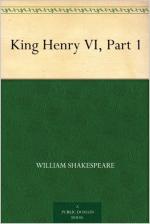|
This section contains 9,112 words (approx. 31 pages at 300 words per page) |

|
SOURCE: “The Farce of History: Miracle, Combat, and Rebellion in 2 Henry VI,” in The Yearbook of English Studies, Vol. 21, 1991, pp. 168-86.
In the essay below, Knowles reexamines the historical sources of Henry VI, contending that Shakespeare's reshaping of historical materials in the three plays demonstrates his departure from the form of chronicle history to the celebrated dramatic mode of Henry IV.
It has long been a critical commonplace that the low-life scenes of the two parts of Henry IV have a dramatic complexity which shows a distinct maturity in Shakespeare's early dramatic art.1 Perhaps A. P. Rossiter's is the best known point of view. Rejecting the simple view of Falstaff as a morality figure he found greater ‘complexities … which often result from the use of comic parallelism of phrase or incident. That is, of parody, critically used, or of travesty-by-parallel’. This resulted, he said, from a bi-focal view...
|
This section contains 9,112 words (approx. 31 pages at 300 words per page) |

|


